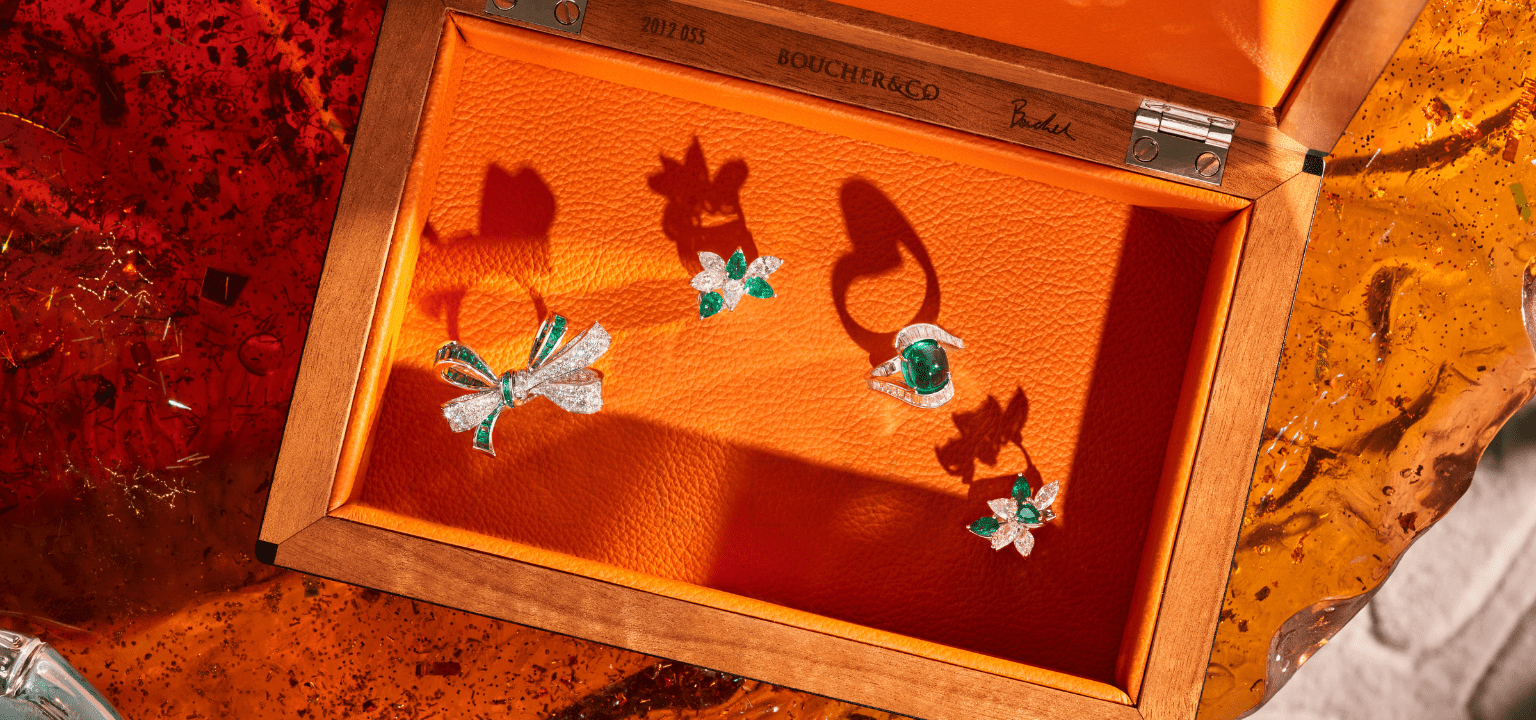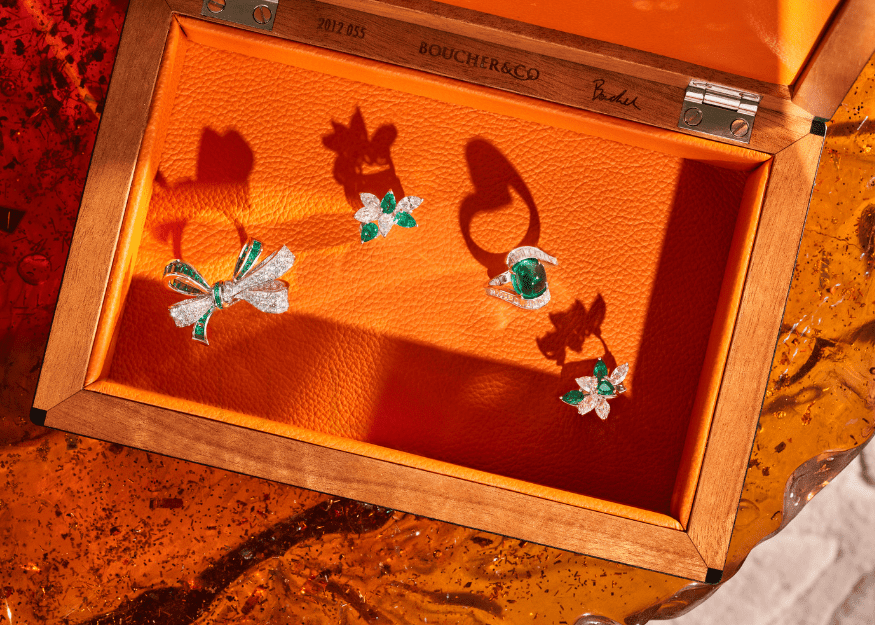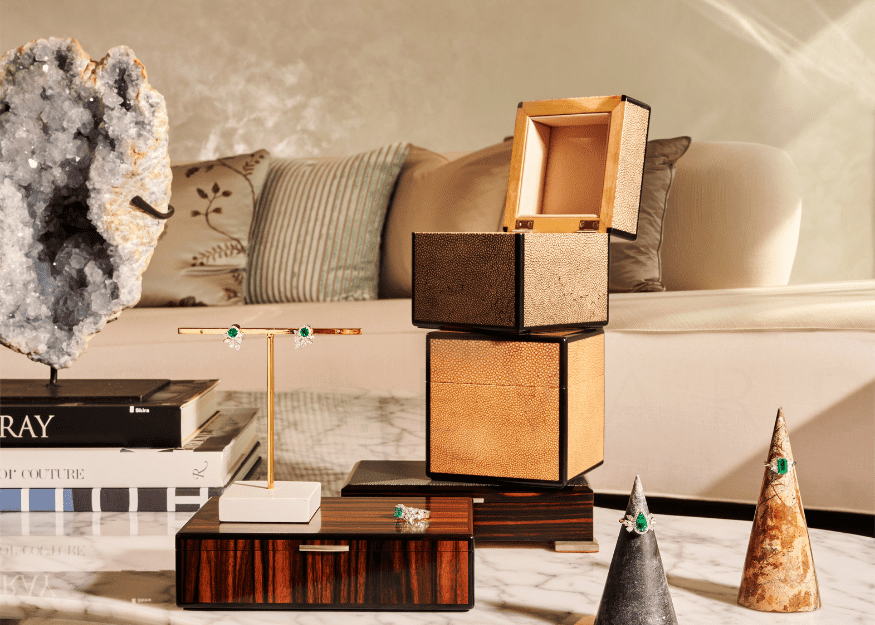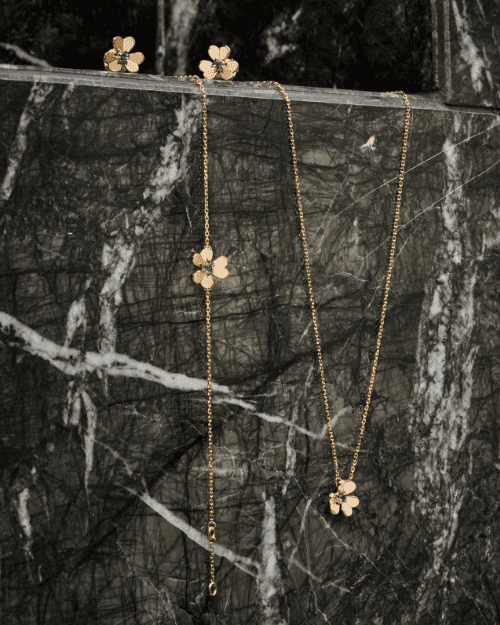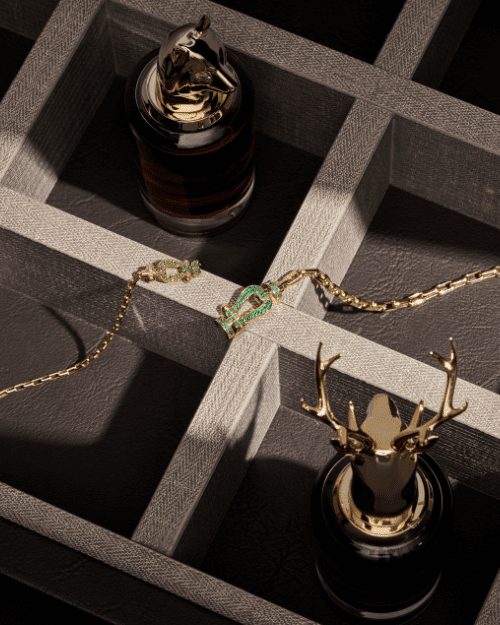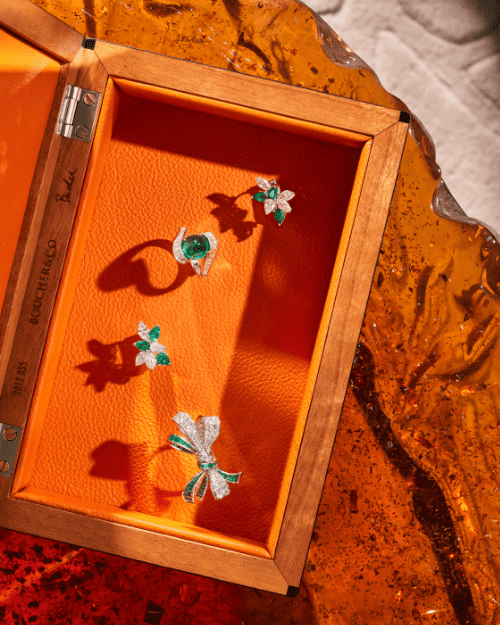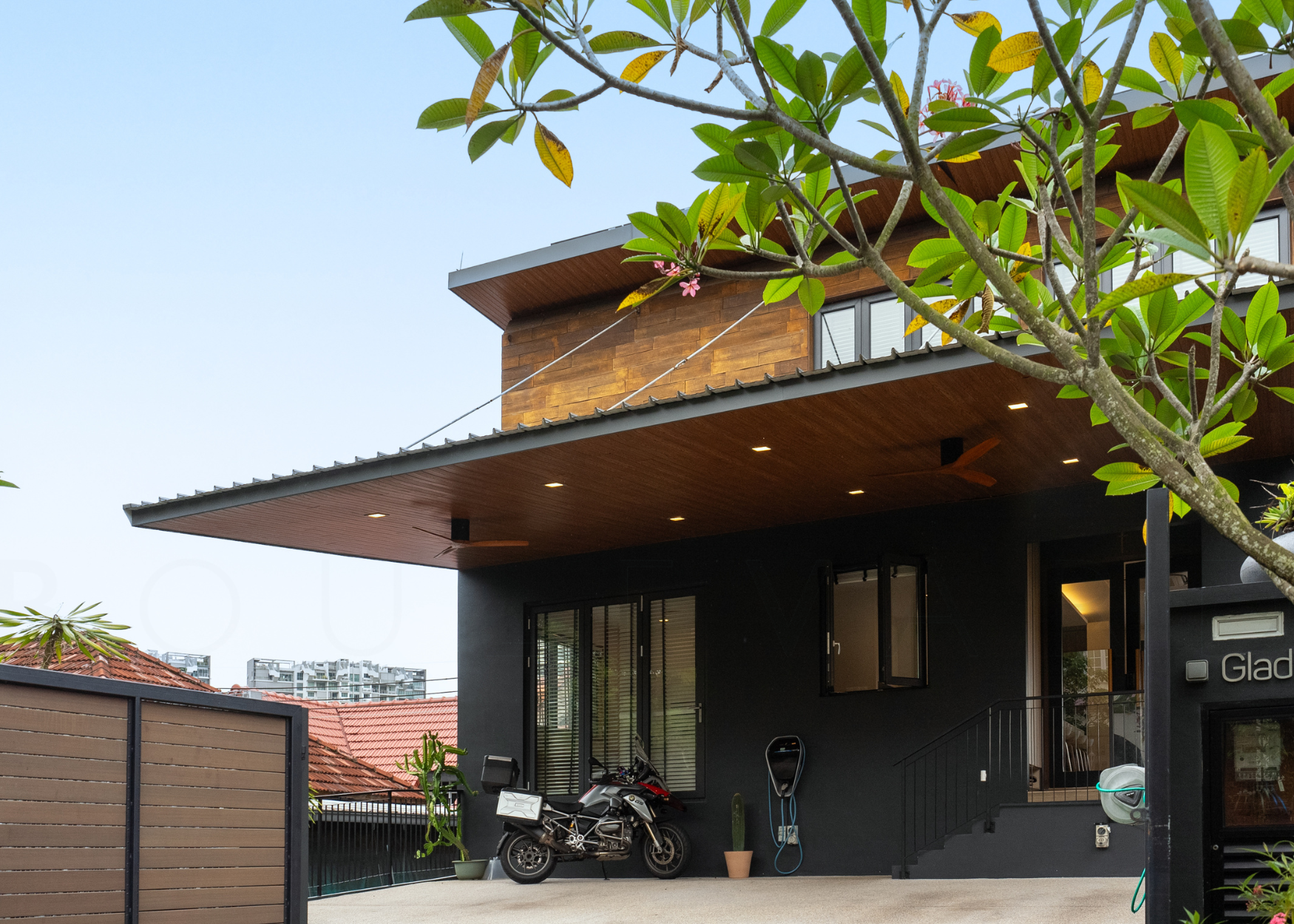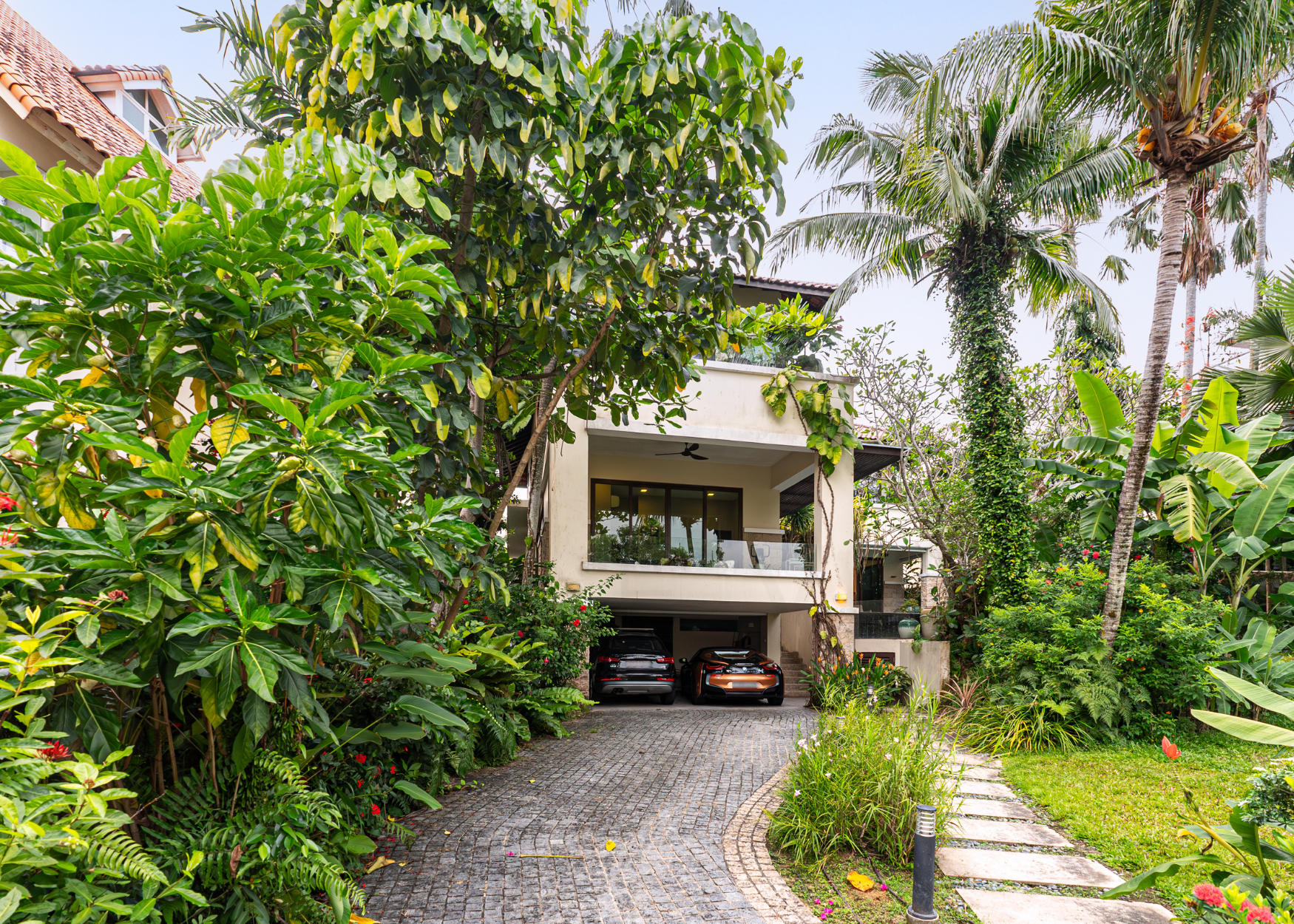Endlessly collectable emeralds
Long admired for their lustrous and seductive colour, emeralds are now catching the eyes of investors as prices rise and the stone becomes ever more sought after.
Shot on location at Sculptura Ardmore
“I believe in the healing powers of emeralds,” says John Glajz, founder of the Glajz-THG jewellery house. “It’s been a lucky stone for me for many years.”
He’s not alone. Cleopatra adorned her palace walls with emeralds, as a sign of wealth and prosperity, and believed they were a symbol of immortality and fertility. But beyond their alleged mystical powers, emeralds have long fascinated collectors for their mesmerising green hue. And in the past few years, despite the notable rise of ‘non-conventional’ coloured gemstones like tourmalines, spinels and topazes, the big four – emeralds, rubies, blue sapphires and diamonds – have continued to dominate auction headlines.
The numbers don’t lie: the value of emeralds has been steadily increasing. In 2017, the 18.04-carat Rockefeller Emerald was sold by Christie’s for US$5.5m. In May this year, a Gemfields auction in Thailand hit record earnings of US$43.3m for emeralds from its Kagem mine.
Shanne Ng, jewellery specialist at Sotheby’s Hong Kong, says, “The demand for emeralds has shown notable growth in the past few years.” She adds that the pandemic has been a contributing factor to the rising prices: “Travel restrictions and lockdowns imposed in the last two years have impacted the emerald price, which shows an increase of about 50 per cent from March 2020 to June 2021.”
Shot #1: Earrings & rings each set with Colombian vivid Muzo green emeralds by Vihari. Shot #2: ‘Frivole’ pendant, bracelet and earrings each set with 1 round emerald by Van Cleef & Arpels. Shot #3: ‘Force 10’ bracelets set with emeralds, tsavorites and diamonds by Fred. Shot #4: ‘Tilda’s Bow’ ring, earrings and swirl ring each set with emeralds by Graff Diamonds. Jewellery box by Boucher & Co.
Glajz attributes the “enormous demand” to several factors. For one, collectors who “already have every type of diamond” are now looking to expand their collections with coloured gemstones, a trend that he says has been gaining traction since even before the pandemic. “The world suddenly realised that emeralds are a super-rare commodity, as mines will eventually run out of stones. Plus, because of current geopolitical developments, including a potential recession, inflation, and the volatility of the stock markets, collectors regard stones as an alternative asset class. Those who have additional funds are now asking themselves: what else can I buy?”
And while demand has been growing, supply has been dwindling – the recipe for a perfect storm. Like many other industries, the pandemic has disrupted supply chains for gemstones. Says Ng, “The lack of accessibility to the mines has resulted in a shortage of labour that has heavily influenced the mining excavation. Higher fuel prices and maintenance costs have also made mining more expensive. The lockdowns created disruptions in supply chain, and gemstone cutting centres have had to reduce production, resulting in the shortage of supply for the market. Gemstone businesses have also been forced to transform from traditional operations to digital, posing a costly challenge for many gem industry players.”
But the question remains: how rare are emeralds, really? As Glajz puts it, “I cannot say that emeralds are rarer than diamonds, but gem-quality emeralds have a greater rarity than diamonds. That’s based on comparing the yield of the mines. Emerald mines yield more carats, but exceptional gem-quality emeralds are only a handful.”
“Gem-quality emeralds have a greater rarity than diamonds.”
—John Glajz
Gabbi Harvey, head of business development at The Muzo Group, concurs, adding, “Emeralds were formed more than 60 million years ago; they are far rarer than diamonds and fine emeralds are in finite supply. A very rare set of mineral ingredients and a delicate balance of conditions, such as heat and pressure, are needed for an emerald to be created and this does not occur regularly”.
That said, she adds that technology is so advanced that geologists are always looking to find new deposits. In the past decade, new deposits have been found in Ethiopia, which, Harvey says, “is producing some beautiful material.” Emeralds can be found in mines throughout the world, including Pakistan, Russia, Australia, Zimbabwe, and Afghanistan, but the three main producers are Colombia, Zambia and Brazil.
Of these, Colombian emeralds are the most sought after. Brenda Kang, founder of vintage jewellery boutique Revival, says, “We are seeing a demand for emeralds of Colombian origin, of beautiful material and quality, ones with no treatment or only minor treatment. These are very rare.”
Unsurprisingly, prices for Colombian emeralds surpass those from Zambia and Brazil. “Prices for Zambian emeralds are also picking up due to the limited supply of fine-quality material; likewise Brazilian emeralds, which are usually about 10 to 15 per cent lower than Zambians, as they tend to be more yellowish and have inclusions,” says Ng.

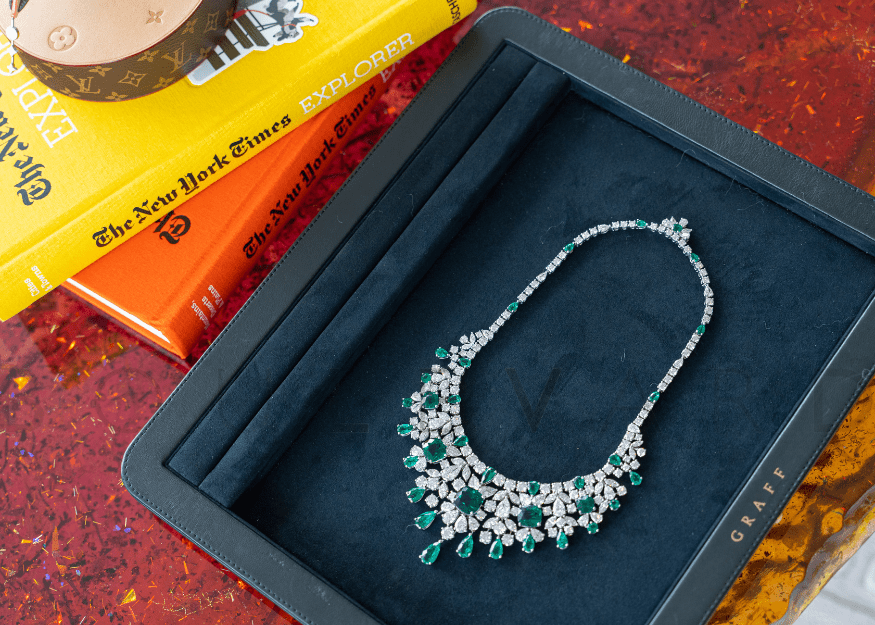
Behind the scenes at Sculptura Ardmore.
The popularity of Colombian emeralds is the result of a combination of factors, including their historical relevance – they were revered by the Incas even before the Spanish began trading emeralds to European and Asian royalty – and their unique colour. Colombian emeralds are distinguished by their apple-green hue, thanks to a rare combination of trace elements chromium and vanadium. Brazilian emeralds are mostly cast with vanadium, while Zambian ones feature iron, resulting in a bluish tinge.
In recent years, emeralds from the Colombian Muzo mine have become the Holy Grail for collectors. Says Sotheby’s Ng, “Fine-quality emeralds from Muzo have increased in popularity due to their super crystal and colour. And the price is notably escalating especially for those with exceptional clarity. The price could be at least 30 to 60 per cent more than other Colombian specimens. In October 2020, Sotheby’s Hong Kong sold a superb 9.26 carat Muzo Colombian emerald ring for US$133,000 per carat, 2.5 times above the pre-sale estimate of US$52,000 per carat.”
Furthermore, The Muzo Group has been highly effective in its marketing efforts, reminiscent perhaps of De Beers’ diamond crusade in the 1960s. In fact, when I visited the BaselWorld Fair back in 2016, I remember being struck by the fact that Muzo was the only gemstone mining company to have a beautifully decorated, massive booth within the jeweller space.
“The vast majority of emeralds in the market today are treated.”
— Gabbi Harvey
Most emeralds come with inclusions, called ‘jardins’. Jardin literally means ‘garden’ in French, which is a charming way to highlight the beauty that these imperfect inclusions bring to the stone. Moreover, emeralds rank between 7.5 to 8 on the Mohs scale, making them one of the most delicate gemstones. These factors combined mean that most emeralds – including the gem-quality ones – need to be treated. Says Harvey, “Emeralds are a Type III gemstone, meaning they will naturally have inclusions. The vast majority of emeralds in the market today are treated to fill surface-reaching cracks, and to improve their clarity and sometimes their stability.”
Collectors need to understand the different treatments available, and understand which ones can adversely impact the value of the stone. While cedarwood oil is considered acceptable, it would be advisable to avoid emeralds that have been filled with opticon, as it can yellow over time. Interestingly, there’s been an increasing demand for untreated emeralds recently. Muzo’s Harvey says, “When one unearths an emerald that has no inclusions and doesn’t need any treatment, it is a rarity and this piece will command a high price.”
Sotheby’s Ng concurs that emeralds “with supreme clarity” are becoming increasingly sought after, and notes that “buyers have developed a strong fondness for stones with fine crystal, saturated colour and eye-clean material” – especially emeralds from Colombia with “exceptional fine and rare quality, no oil enhancement and above 10 carats”. She notes that they have “fetched record-breaking prices at auction, between US$100,000 and US$200,000 per carat, while five carats or above of fine quality may range from US$30,000 to US$80,000 per carat.”
Glajz recently launched a collection featuring Argyle pink diamonds and Muzo emeralds that are non-oiled. The collection is mostly sold out – demonstrating that collectors are willing to fork out six figures and more for these stones.
Sotheby’s Ng says, “In October 2020, when I took in a 9.26 carat no oil Muzo emerald, the exceptional crystal, saturated colour and beautiful brilliance captured my interest. In addition, it came with a certificate of origin and traceability, which is a guarantee that the stone is mined and cut in Muzo. It was sold for US$133,000 per carat. This set a new benchmark for collectors on the criteria of a top gem emerald.”


Shot on location at Sculptura Ardmore: view the four-bedroom residence listing for further details.
Where to now
